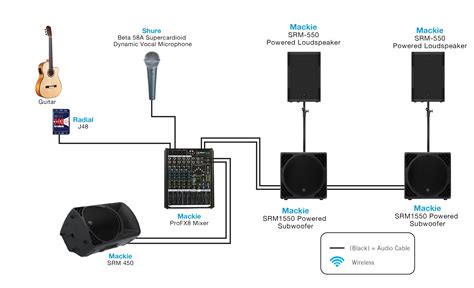One Speaker, Pure Sound: Simple Live Techniques
Getting a great sound with just one speaker might seem limiting, but with the right techniques, you can achieve surprisingly clear and impactful audio for your live performance. This guide explores simple yet effective strategies to optimize your single-speaker setup, focusing on maximizing clarity, minimizing feedback, and ensuring an engaging listening experience for your audience. Whether you're a solo artist, a small band playing a tiny venue, or simply experimenting with minimalist setups, these techniques are invaluable.
Why Use Only One Speaker?
Before diving into the techniques, let's address the "why." Why choose one speaker when two or more seem preferable? Several reasons justify a single-speaker approach:
- Portability and Simplicity: A single speaker is significantly easier to transport and set up, ideal for smaller gigs, busking, or mobile performances.
- Cost-Effectiveness: Reducing the number of speakers lowers the initial investment and reduces potential equipment failure points.
- Focused Sound: A single, strategically placed speaker can sometimes create a more focused and intimate sound, particularly beneficial in smaller spaces.
- Minimalist Aesthetic: For artists valuing a stripped-down, less cluttered stage presence, a single speaker contributes to a cleaner visual.
How to Achieve Pure Sound with One Speaker
Several key aspects contribute to achieving pure, clear sound from a single speaker. Let's explore them:
Speaker Placement is Crucial
The position of your speaker significantly impacts sound quality and audience experience.
- Room Acoustics: Consider the room's dimensions and reflective surfaces. Experiment with different positions to find the spot that minimizes unwanted reflections and maximizes even sound distribution. Avoid placing it directly in a corner, which can lead to booming bass and muddy sound.
- Audience Positioning: Aim to direct the speaker towards the center of your audience, ensuring everyone receives a balanced sound.
- Distance from Walls and Objects: Avoid placing the speaker too close to walls or large objects, as this can cause undesirable sound coloration and reflections.
EQ and Mastering are Your Friends
Even with a single speaker, using equalization (EQ) and mastering techniques is vital.
- Frequency Balance: Use your mixer or onboard EQ to adjust the frequencies to compensate for your speaker's characteristics and the room's acoustics. Cutting frequencies prone to muddiness (low mids) and boosting clarity in the high mids and highs can often improve intelligibility significantly.
- Mastering for Live: Mastering your music specifically for a live, single-speaker context ensures the mix translates well to this setup. Focus on achieving a balanced mix that doesn't require excessive EQ adjustments during the performance.
Microphone Technique and Placement
Microphone technique directly impacts your sound's clarity.
- Proximity Effect: Be mindful of the proximity effect, where closer microphone placement boosts low frequencies. Adjust your distance to the microphone to achieve the desired balance between warmth and clarity.
- Microphone Choice: Selecting the right microphone for your instrument or voice is crucial. A dynamic microphone is generally more robust for live performance and less prone to feedback.
Dealing with Feedback
Feedback is a common problem with amplified sound. Here's how to mitigate it with a single speaker:
- Gain Staging: Carefully manage the gain levels of your microphone and amplifier. Start low and gradually increase until you reach the desired volume, avoiding excessive gain that can lead to feedback.
- Speaker Orientation: Experiment with slightly angling the speaker away from the microphone to reduce the likelihood of feedback.
- EQ Notch Filters: If feedback persists at a specific frequency, use a parametric EQ to apply a notch filter, effectively cutting that frequency to eliminate the feedback.
Choosing the Right Speaker
Selecting the appropriate speaker is paramount for optimal sound.
- Full-Range Speaker: Opt for a full-range speaker capable of reproducing a wide frequency range. This allows for a more natural and balanced sound.
- Speaker Power: Choose a speaker with sufficient power handling for your application. Overpowering a smaller speaker can lead to distortion, while underpowering a larger one results in insufficient volume.
- Speaker Impedance: Ensure the speaker's impedance matches your amplifier's output impedance for optimal power transfer.
Frequently Asked Questions (FAQ)
What type of speaker is best for a single-speaker live setup?
A full-range speaker with a wide frequency response is generally ideal. Consider speakers designed for live sound applications.
How do I prevent feedback with one speaker?
Careful gain staging, proper microphone placement, and the use of EQ notch filters are key to preventing feedback.
Can I use a PA system with only one speaker?
Yes, many PA systems allow for configuring a single-speaker setup. However, check your system's manual for instructions.
What kind of microphone is best for a single-speaker setup?
Dynamic microphones are often preferred for live sound due to their robustness and resistance to feedback.
By implementing these simple techniques, you can significantly improve the clarity and impact of your live sound, even with just one speaker. Remember that experimentation is key – the ideal setup will vary depending on your specific equipment, the venue, and your personal preferences. Mastering the art of the single-speaker setup unlocks a world of minimalist performance possibilities.

